I need to fill $Year with missing values of the sequence by the factor of $Country. The $Count column can just be padded out with 0's.
Country Year Count
A 1 1
A 2 1
A 4 2
B 1 1
B 3 1
So I end up with
Country Year Count
A 1 1
A 2 1
A 3 0
A 4 2
B 1 1
B 2 0
B 3 1
Hope that's clear guys, thanks in advance!
